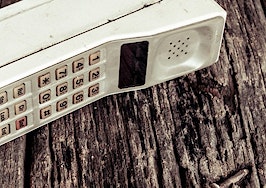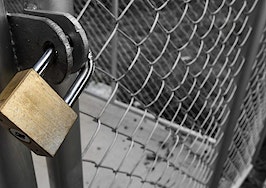- NAR has created a technology unit, CRTLabs, that's tasked with fostering security in the smart home space.
- Smart home devices can make great closing gifts and help agents market properties.
As more and more smart thermostats, remote-control locks and even Internet-connected refrigerators pop up in homes, smart home technology continues to take on an increasingly important role in the lives of real estate agents, homebuyers and sellers.
This has not been lost on the National Association of Realtors (NAR).
A letter recently sent by NAR to a government agency sheds light on how the trade group is seeking to shape the evolution of smart home technology in a way that maximizes benefits to Realtors and consumers.
Smart home devices can help agents better market properties
Through a special technology unit recently formed by the trade group, NAR is partnering with manufacturers and organizations to foster security in the “Internet of Things” (IoT) space and help create easier ways to transfer the ownership of devices between consumers, according to a public comment submitted by NAR President Tom Salomone to the Telecommunications and Information Administration.
NAR’s letter also called for “interoperability” between smart devices and open standards that could increase protection for consumers. The letter was submitted in response to a public request for comments from the agency, which is conducting a study on IoT and any possible role for the government in the industry.
Information captured by smart home and municipal devices — which NAR believes will appear in multiple listing services (MLSs) in the future — can help agents better market properties and pinpoint the best neighborhoods for their clients, Salomone wrote.
More than 1 in 4 of U.S. adults have smart home products in their home, with that ratio doubling to nearly half among millennials, according to a survey commissioned by Coldwell Banker and CNET.
“IoT is relevant to agents because it’s relevant to consumers, and increasingly so,” said Chad Curry, managing director of NAR’s CRTLabs.
What’s CRTLabs?
NAR hatched CRTLabs in June 2015 to study, provide education or even build technology, including smart devices. (For example, the group is currently developing sensors that can measure air quality.)
Smart-home devices make great closing gifts that “put our members top of mind,” and utilities and insurance companies are starting to offer discounts to consumers who use the devices, sometimes even giving them away for free, according to Curry.
“If we can look at what’s on market and educate [Realtors] to the value of these devices (energy savings, control, comfort, safety, security), then they have another value add for their relationship with a homeowner,” Curry said, explaining CRTLabs’ mission.
Mitigating risk
Networked technology built into everyday appliances, devices and even the walls of homes can offer convenience to occupants by monitoring, temperature, security and lighting.
But this technology may also collect personal information or “have unpatched vulnerabilities” that can threaten the privacy and security of homeowners and renters, Salomone wrote in his public comment.
CRTLabs has teamed up with a number of organizations to help mitigate this risk.
It’s working with manufacturers, BuildItSecure.ly, universities and government agencies like the Department of Energy to uncover any security or privacy weaknesses in IoT device and application code, the letter said.
CRTLabs is also using the site Shodan to flag insecure devices made by the unit’s partner manufacturers and has even offered to fix bugs.
As part of its effort to promote privacy and security protections in the IoT, NAR is collaborating with the Underwriters Laboratories, a “safety science company” that offers a “Cybersecurity Assurance Program,” and the Online Trust Alliance, a non-profit dedicated to enhance “online trust” while still promoting innovation.
Transferring ownership
Another IoT challenge in NAR’s crosshairs: the difficulty of transferring the ownership of smart devices between homebuyers and sellers. For example, a homebuyer might inherit a thermostat, smart camera and smart lights made by three different companies, each of which has a separate account used by the former owner.
“At the time of closing and transfer, there currently is no easy way to reset these devices and transfer to the new owner of the home,” Salomone said. “In order to get ahead of this problem, CRT is working with manufacturers to improve this process.”
In addition to mentioning its work on tackling security and device ownership issues, Salomone also encouraged support for “interoperability” and “open standards” in the IoT field.
Creating standards
Industries across the private sector should collaborate to create standards for IoT — which currently has “no mutually agreed upon vision” — because that will keep IoT devices more secure and enable more compatibility between devices made by different companies.
These standards should also be open to developers so the best minds can come up with the optimal ways to protect consumers’ personal information, “whether it’s transmitted to their phones or being generated within the walls of their own homes.”
Legislation or regulation that would specifically govern IoT isn’t called for at the moment, Salomone said.
But depending on how IoT develops, there could eventually be a need for “common sense privacy and data security legislation that is carefully and narrowly tailored to minimize the regulatory burden such a law could place on small businesses.”













